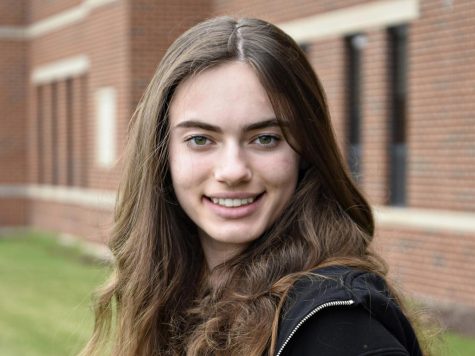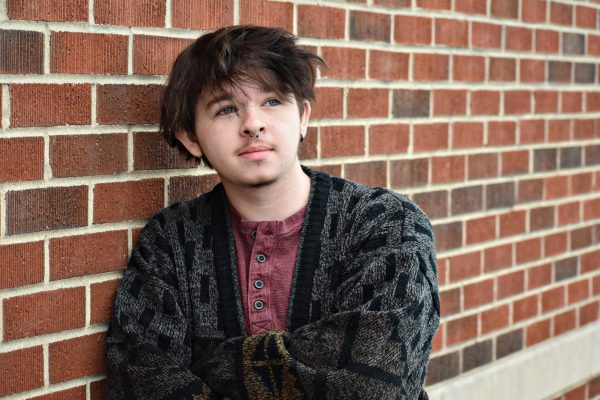Photo Essay: Scenes of dissection at WEGO
March 15, 2023
On March 9, science teacher Lisa Licari’s human anatomy class conducted a dissection of a cow’s eyeball. This is one of the many dissections students in this science class takes part in to further their knowledge of body systems.
Human Anatomy is an appropriate class for anyone who is interested in working in the medical field. This class will prepare students for college through labs and hands-on experience.
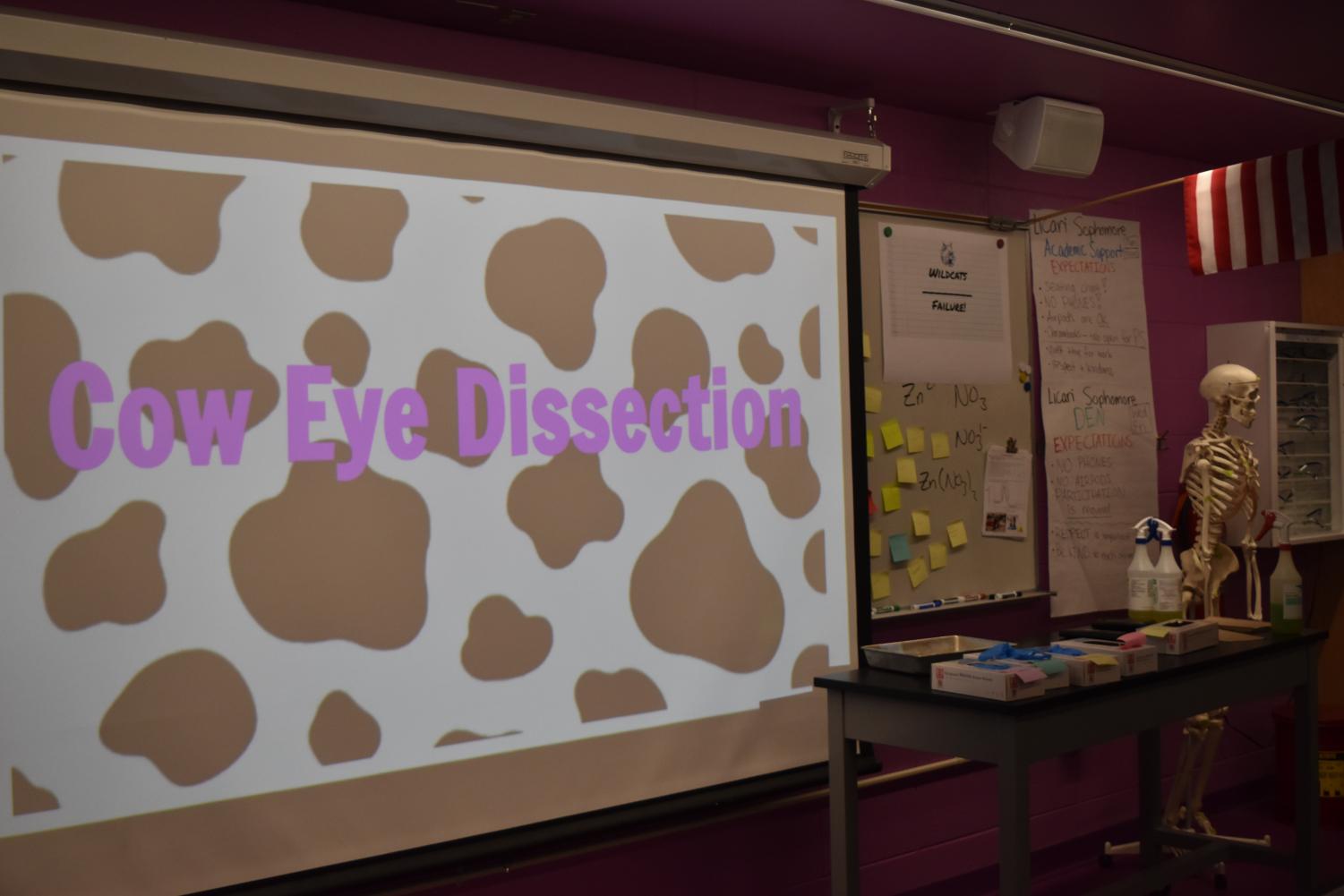
Last Thursday, students in Licari’s class were welcomed into the room with a cow-themed slide representing the class’ focus for dissection: the eyeball of a cow. This colorful greeting was the first thing students noticed as they entered the classroom.
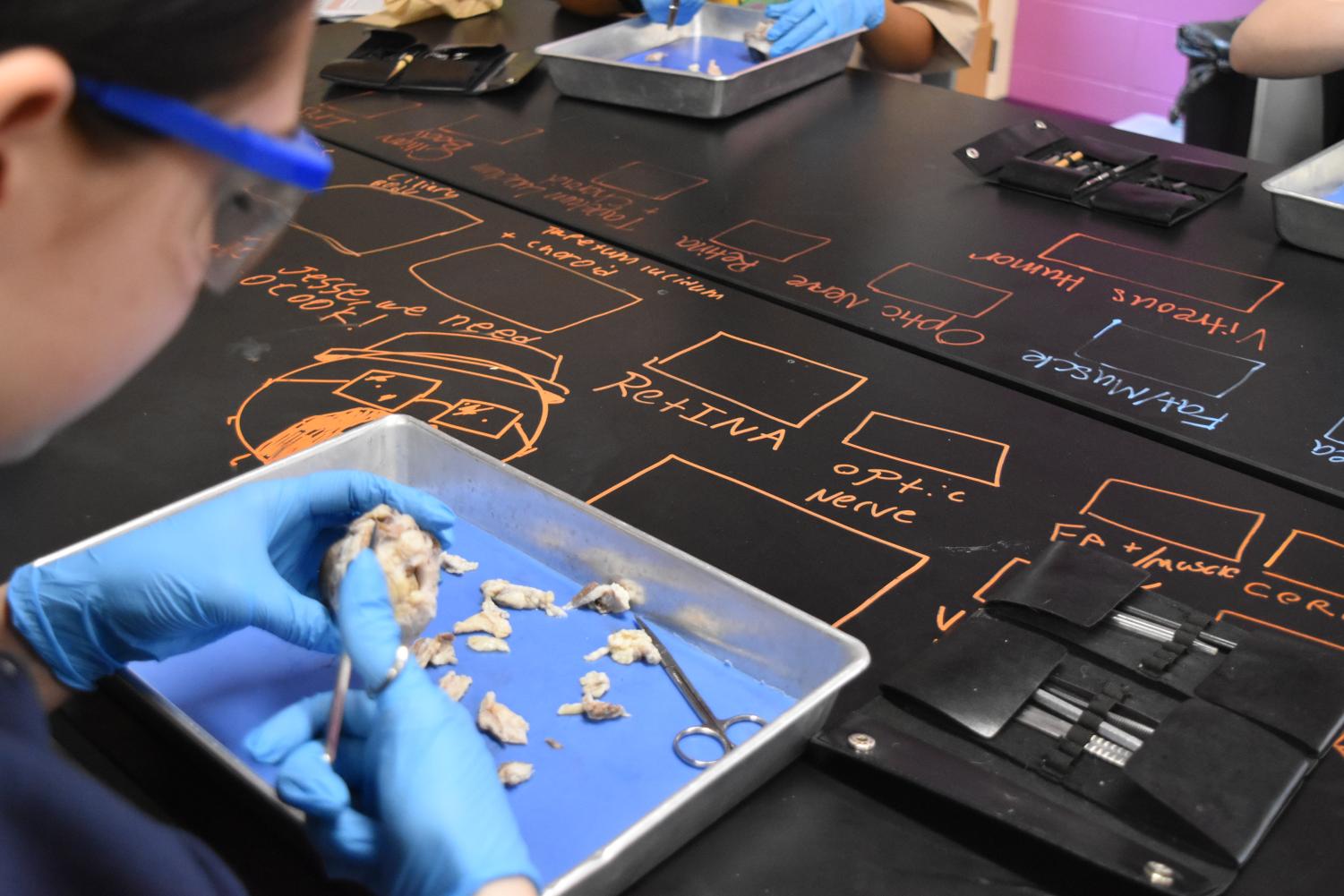
Once students set-up their equipment, they began to cut at the eyeball, removing the fat. Students were careful not to puncture the eyeball itself during this phase, but just to remove the outer skin and fat.
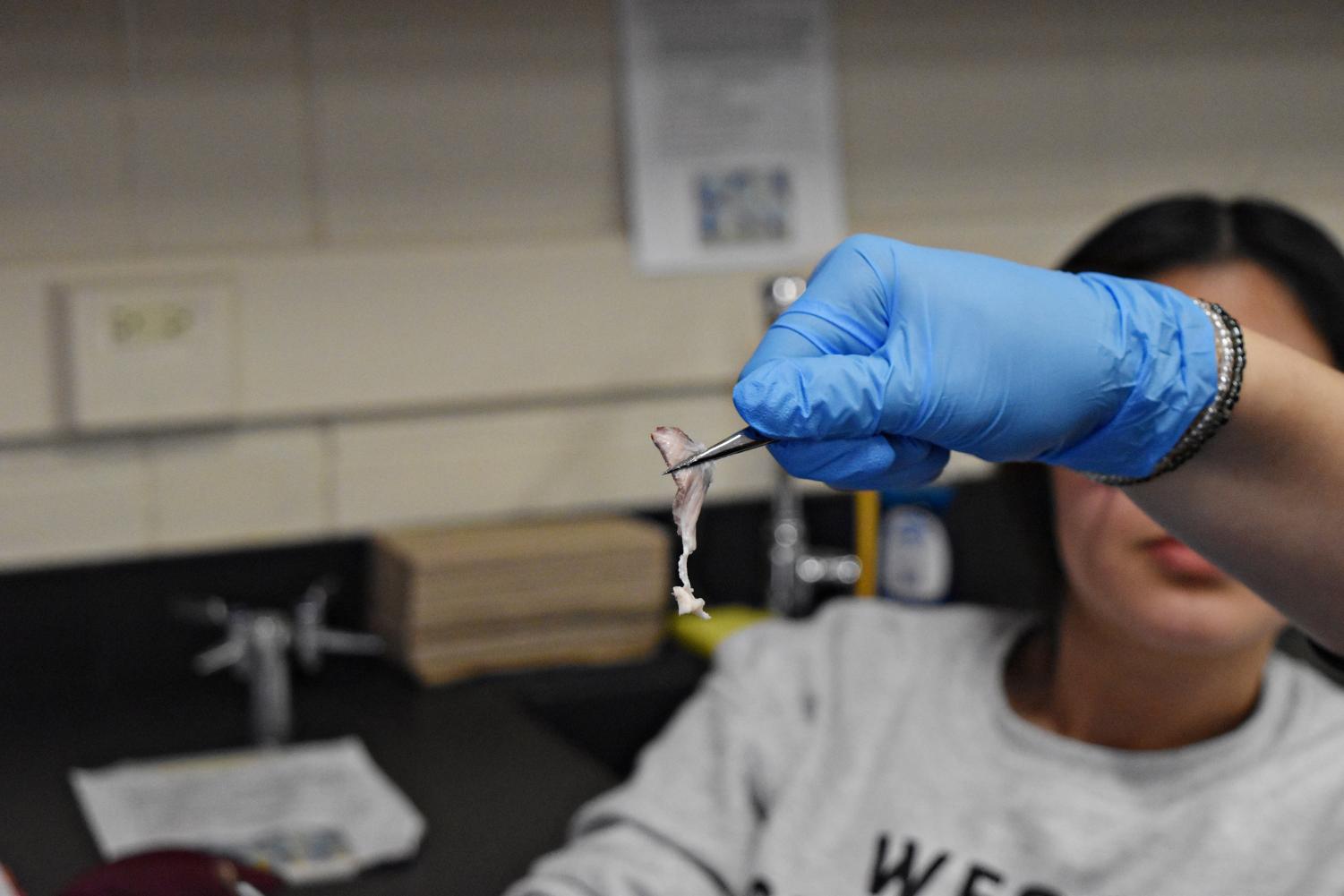
Removing the skin and fat around the eyeball is an intricate task: as Licari explained, sometimes the skin will come off easily, and other times, students have to work harder to remove the excess.
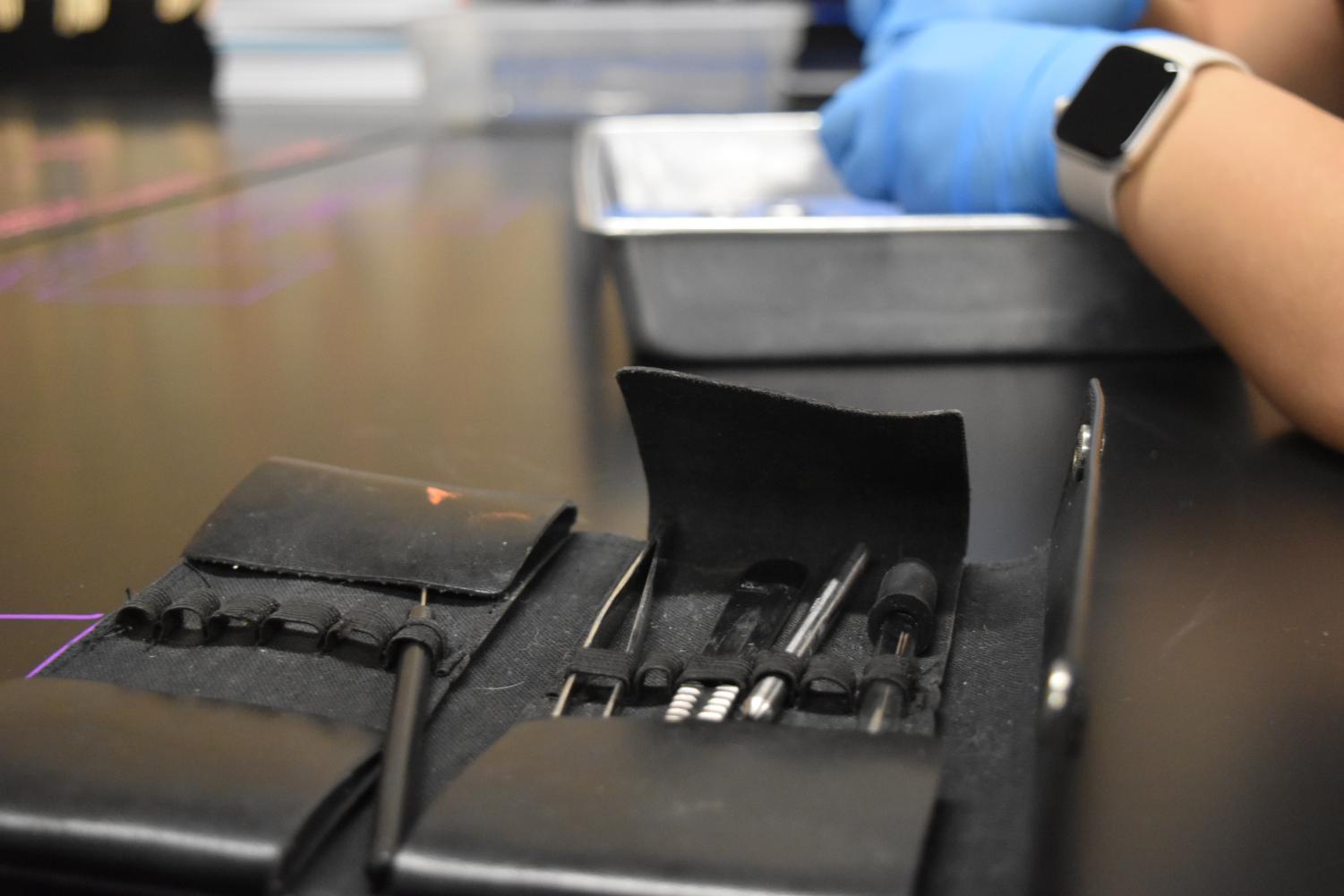
Students relied on many tools for this particular dissection, and had the ability to explore which tools worked best for each of the tasks.
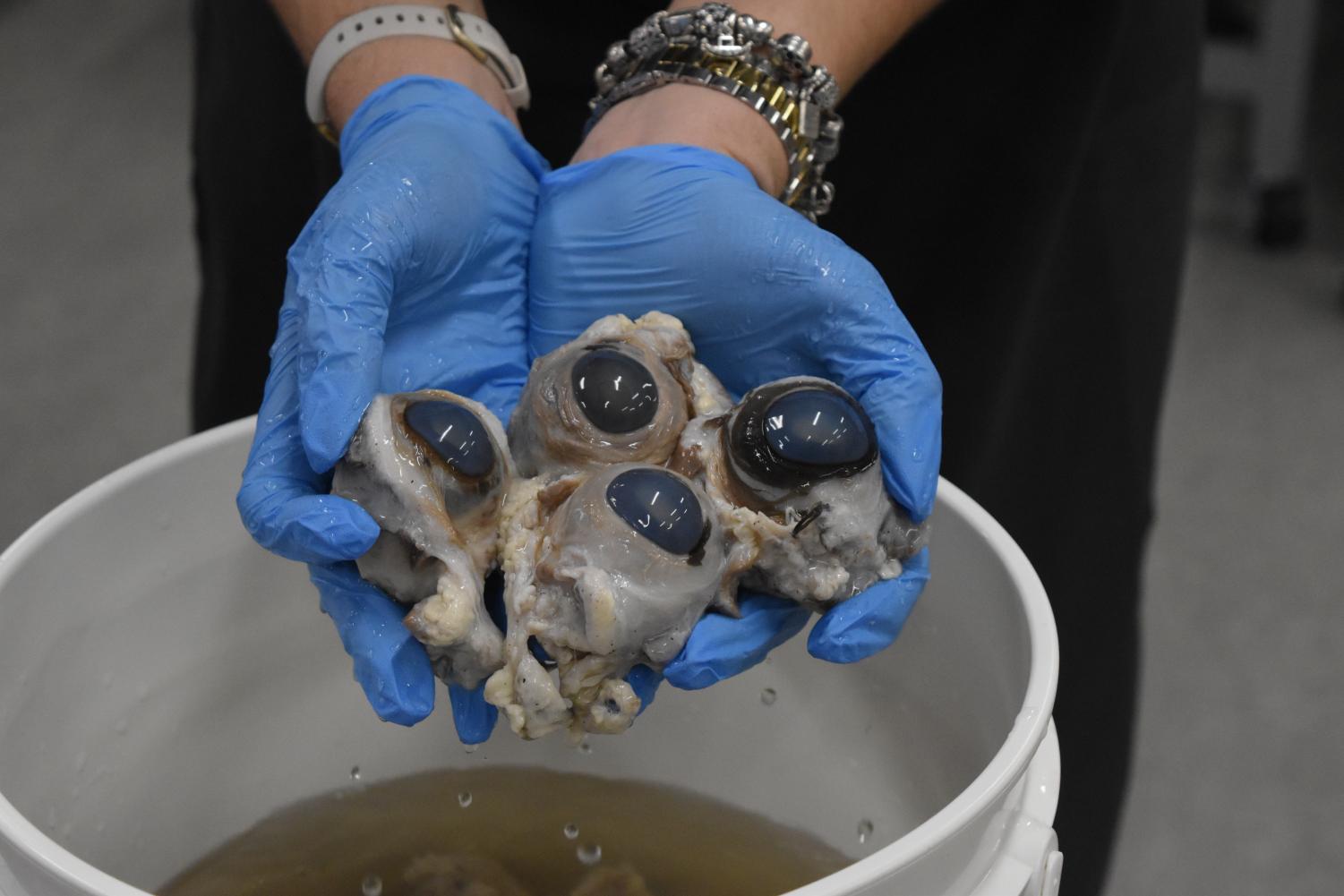
Licari held up five cow eyeballs that had yet to be dissected. The organs are stored in a container with liquid in order to keep the eyeballs’ fluid intact.
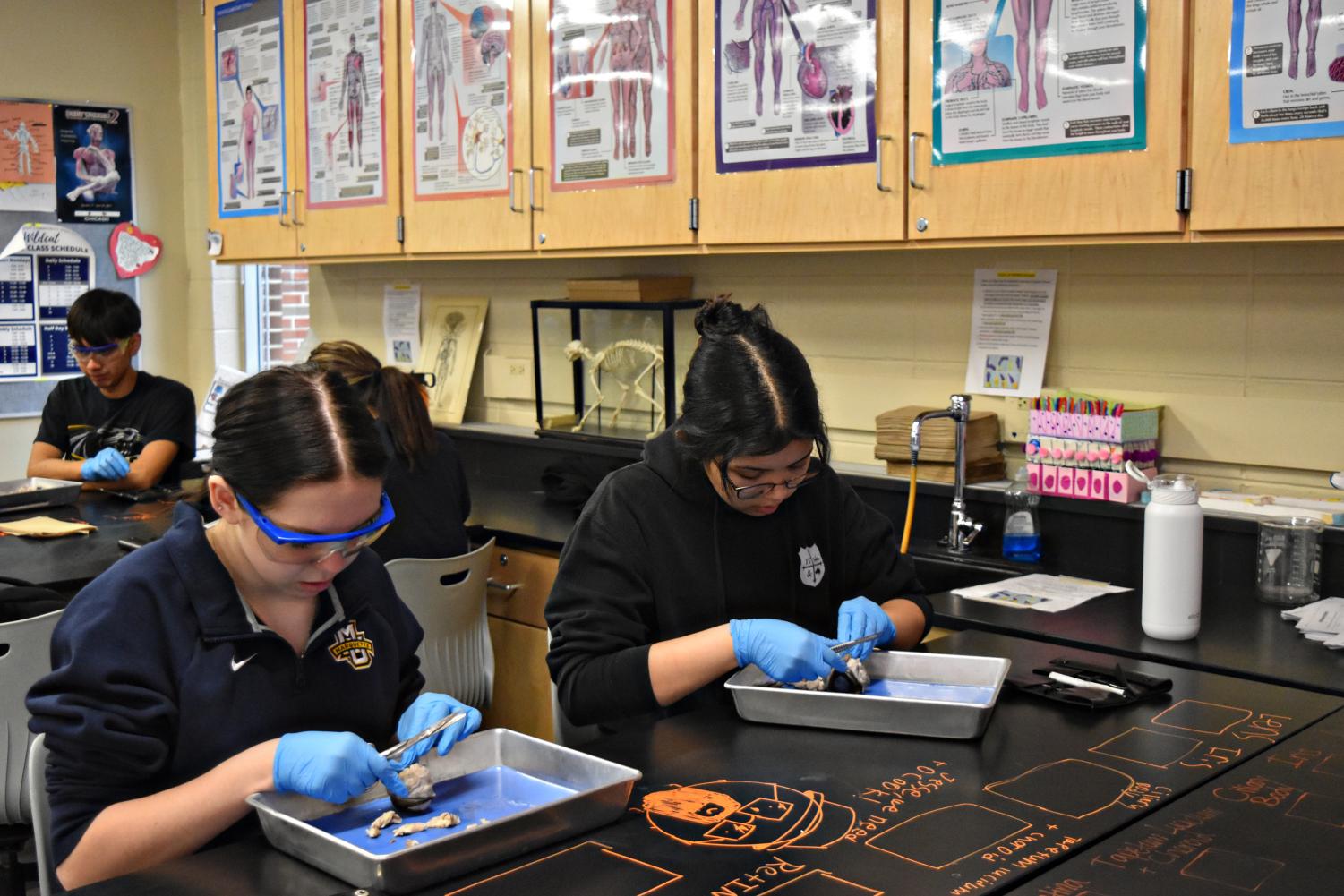
Photo by Sasha Baumgartner
Students had the choice of working in a group/with a partner, or to work independently. Seniors Taylor Estrada and Juanita Coronel, pictured, chose to work independently so they could complete every step of the eyeball dissection on their own.
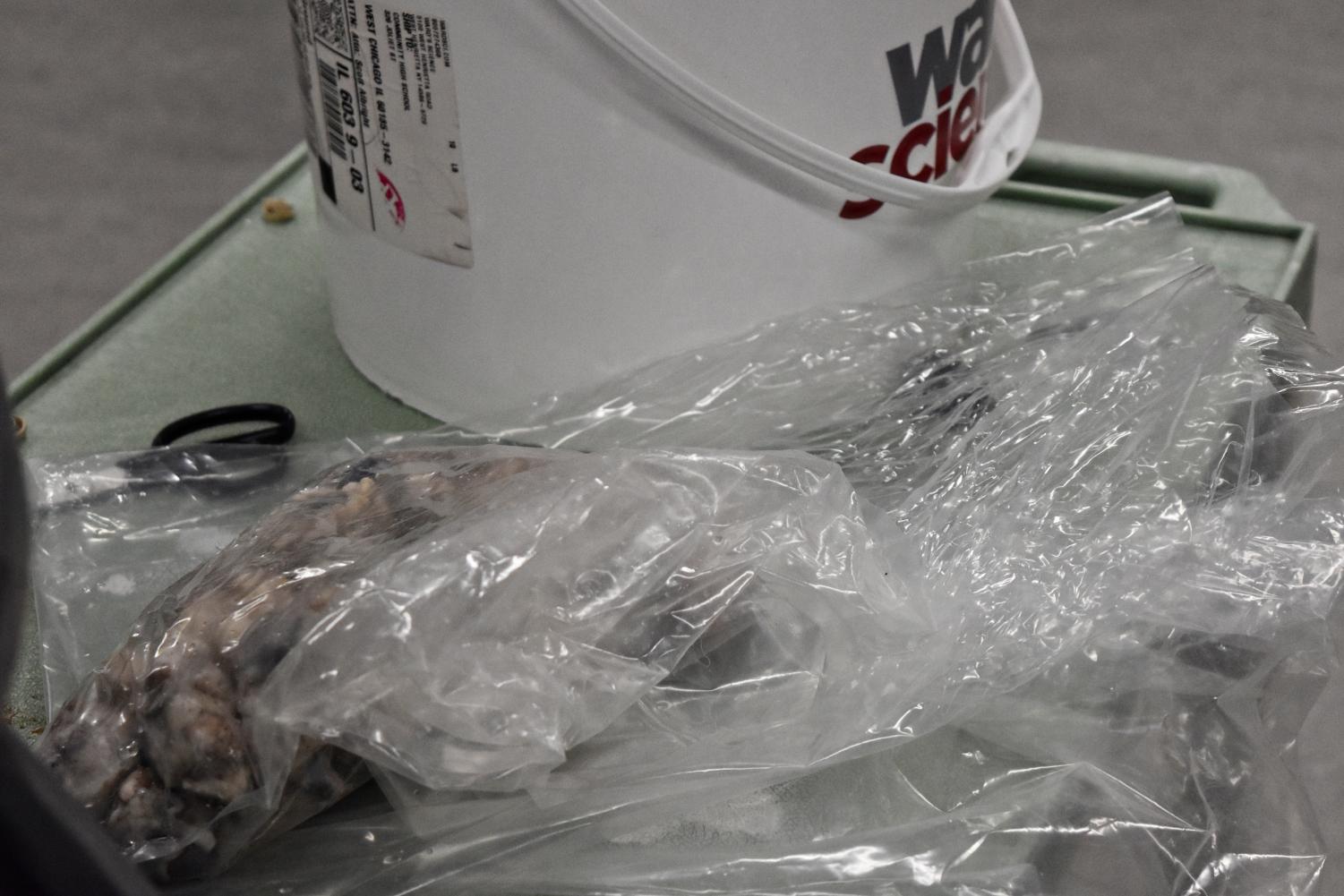
Tightly sealed in the wrap were sheep eyeballs. Students had the option to either dissect a cow eyeball or a sheep eyeball. The sheep eyeball was a good choice for anyone looking for a smaller dissection because the cow eyeball was much larger and required more work.
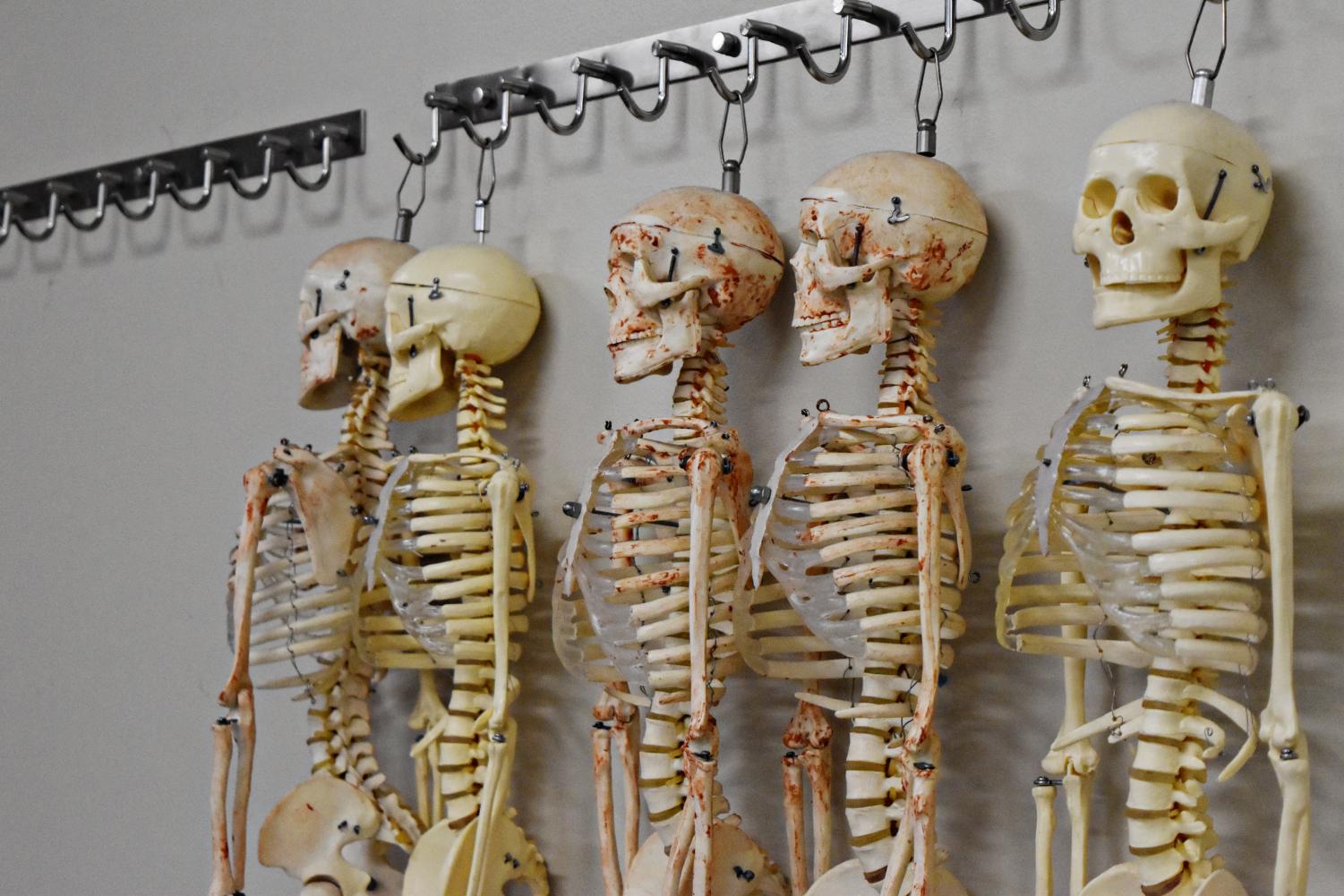
A crowd of onlookers observed the students at work. Although it may look like blood was left over on these skeletons, it was actually clay used earlier in the semester to showcase the human body muscles.





